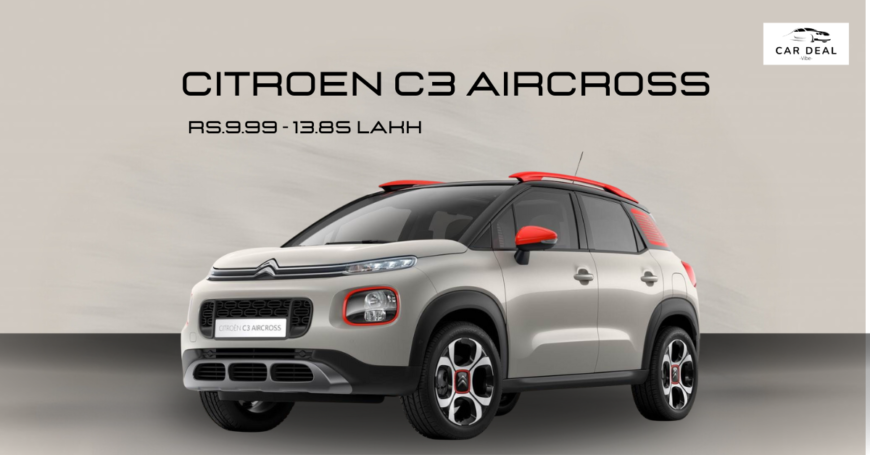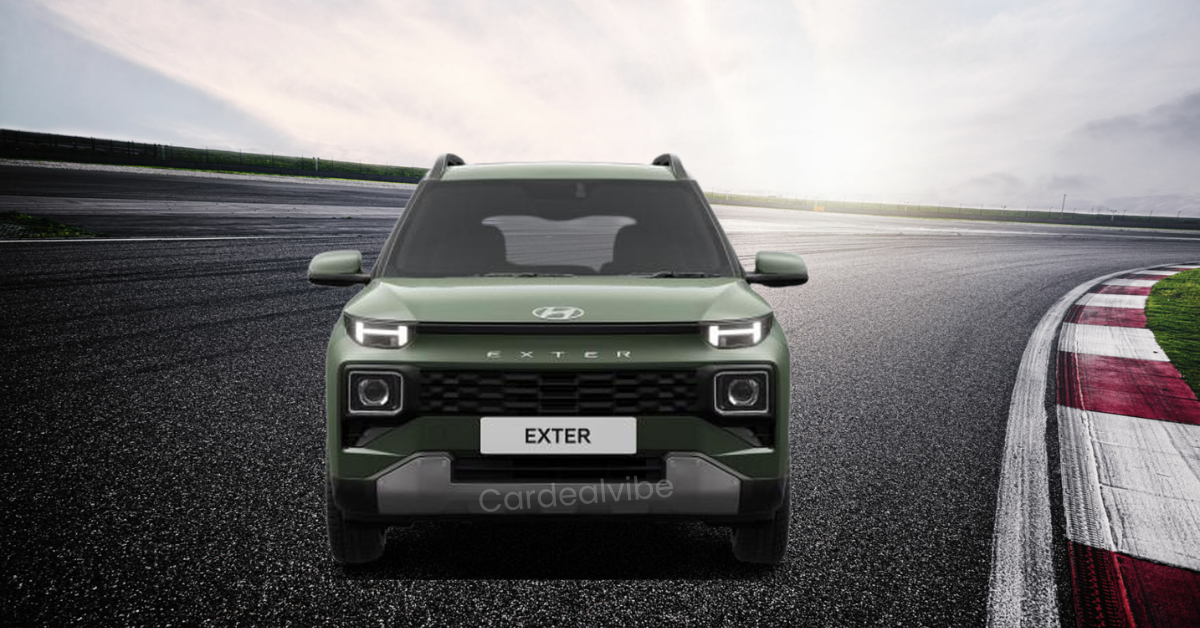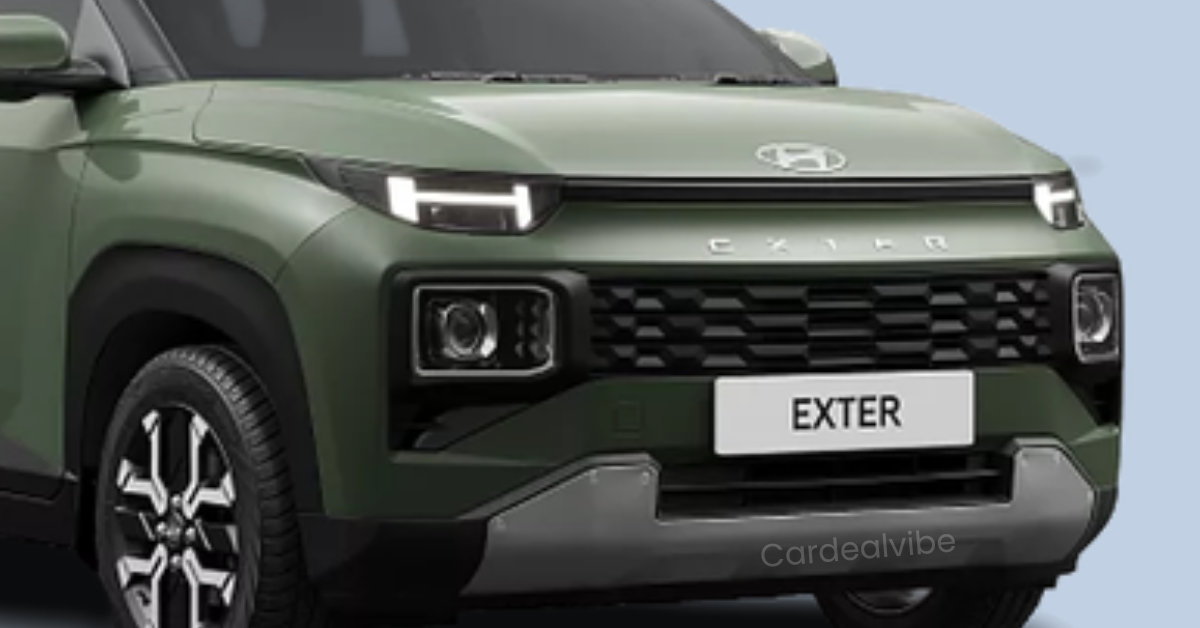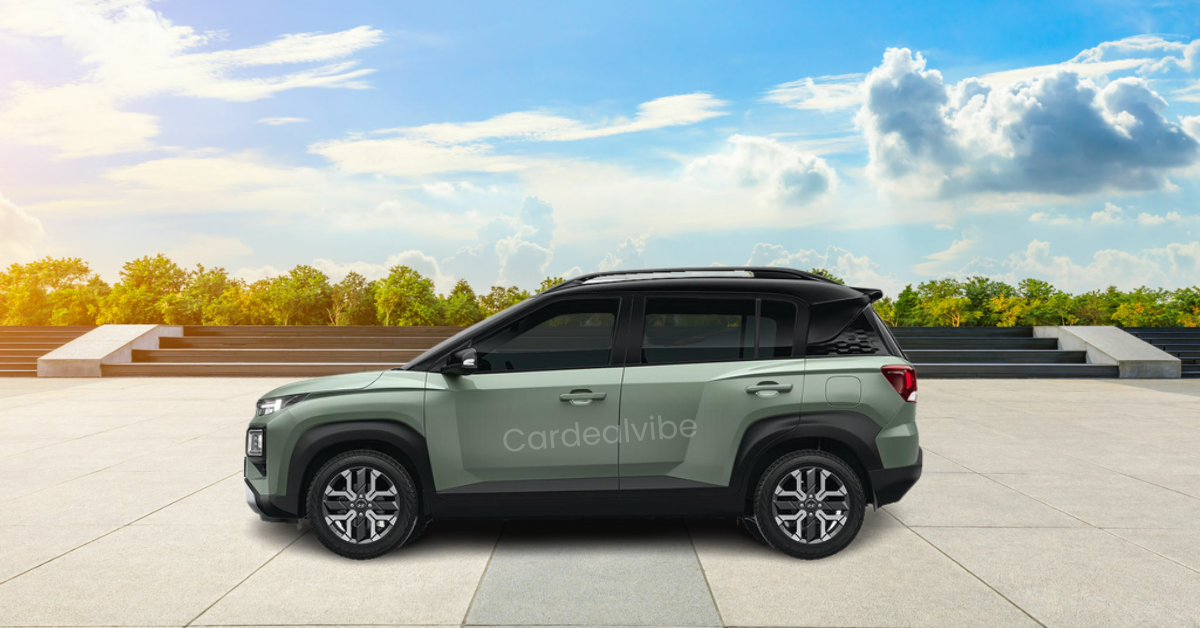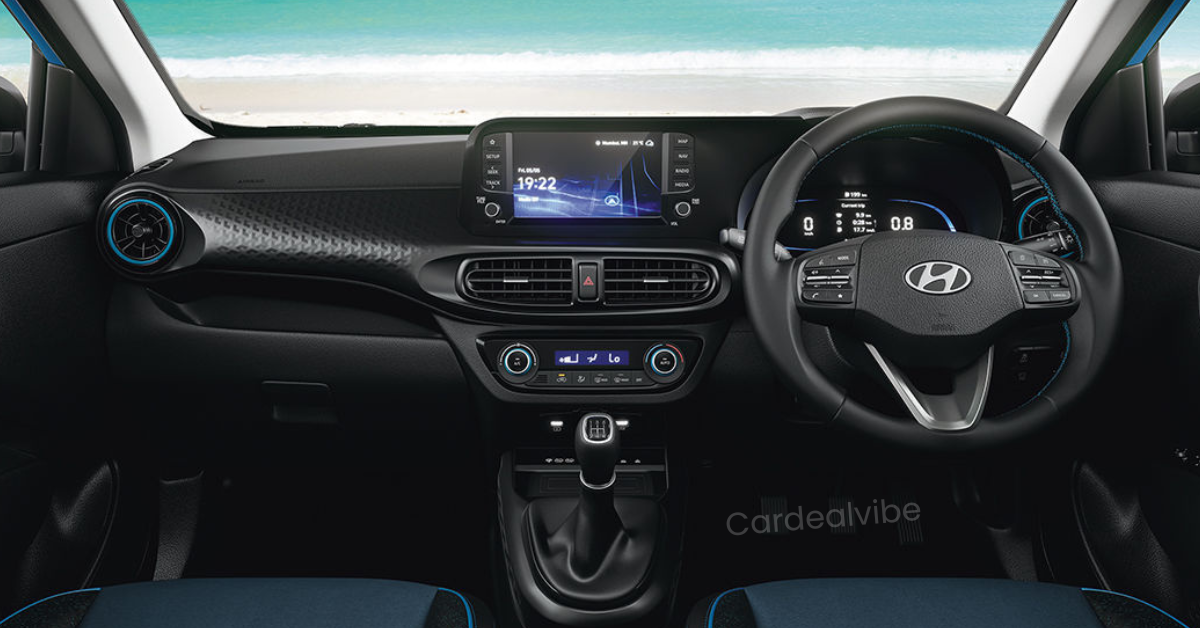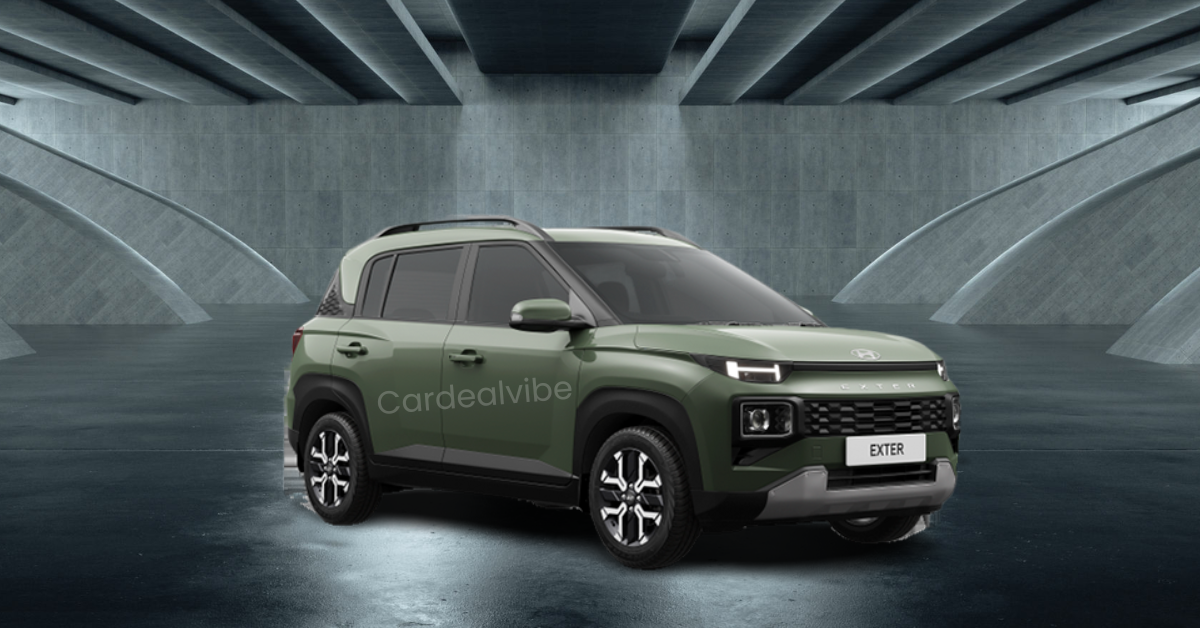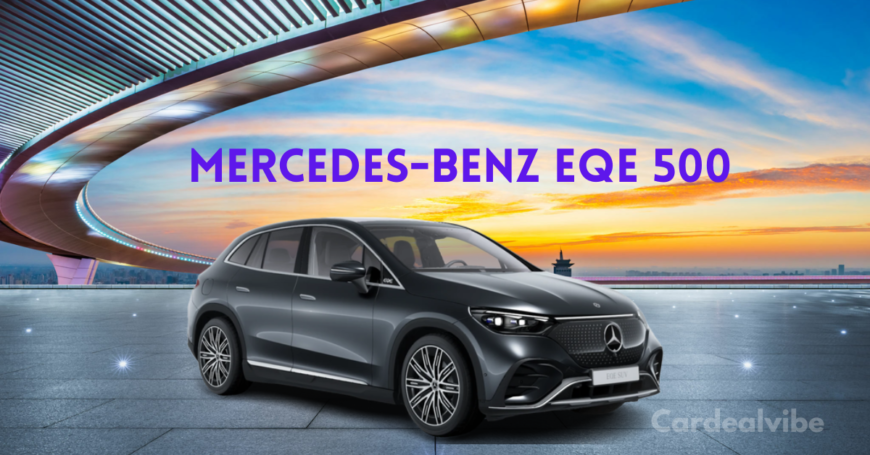Tata Tiago EV: Extended Report
For more than a month, the Tata Tiago EV car was left to gather dust in my parking lot. The Tata Tiago EV car would not hold up for a week-long road trip (for work, I swear) or other year-end obligations. We nevertheless learned a few important lessons about living with an EV during the process.
What Takes Place If I Don’t Watch It?
Does the fee decrease? Nope. Not even close. I’ve already left it alone for a week once in its existence and for two weeks the second time. When it was last used, the battery’s state of charge was precisely the same.
According to the handbook, “Before leaving the vehicle for an extended period of rest (>15 days), it is recommended that the vehicle be charged greater than 50%.” The car must be fully charged utilizing slow charging after the rest period before being driven.
For around 14 days, we had kept it below 50%, and we had not experienced any problems. After a prolonged period of inactivity, Tata suggests a gradual full charge. This leads us to our next question…
Should I always just fast-charge it?
Once again, from the handbook: “For best battery life, one full (slow) charge should be performed at least once per month. It is advised to perform one complete slow charging cycle following every four fast charging cycles.
This is undoubtedly fantastic for the automobile. However, it’s not possible if the automobile is owned by an impatient individual and their home does not have a slow charging capability. Seven consecutive quick charges have been performed on our test Tiago EV. nearly twice the suggested amount.
The outcome was very clear. a noticeable decrease in range. Rather than using the typical 50–60% of its charge in 100–120 km, the Tiago would use up approximately 65–70% of it, resulting in a 10-15% reduction in range. Considering that the range is only 200 kilometers, to begin with, this is a little excessive.
Regular quick charging will undoubtedly accelerate the deterioration of the battery’s general condition. It is better if you routinely avoid fast charging. Regularly charging at 3.3kW or 7.4kW (AC) is best for keeping the battery healthy.
Is It Safe to Pressure Wash?
The author has also been known to be impatient, as seen by Tiago’s many travels to the closest pressure washing facility. Furthermore, it’s improbable that you would have the time to meticulously clean your EV using a bucket and cloth every time.
There is absolutely no effect of pressure washing on the car. Having said that, you must take care to remind the cleaning crew not to pressure wash the charging flap and under the bonnet. Additionally, it is strictly forbidden to give the car’s underbody a direct pressure wash.
Regarding the interior, there are no limitations of any kind. The parts and components may be cleaned and maintained in the same way as the standard petrol-powered Tiago.
The last month with the Tiago EV is about to begin. Even though it has only been used occasionally, the Tiago EV has shown why it is a valuable city car. For the upcoming report, what could be improved?
Review of Citroen C3 Aircross Automatic after first drive
Is the very practical but lackluster feature set of the C3 Aircross enhanced by the addition of an automatic transmission?
The Citroen C3 Aircross, with its 5+2 seating arrangement, is a unique offering in the small SUV market. Its rivals include the five-seater SUVs with an emphasis on amenities and an upscale interior: the Hyryder, Taigun, Kushaq, Astor, Elevate, Grand Vitara, and Creta. However, it is clear that Citroen prioritizes functionality over features of Citroen C3 Aircross.
Even though it was quite practical, there was a major flaw in the shape of an absent automatic gearbox. Now that a 6-speed automatic has been added, that has been fixed, but is it still excellent enough for you to notice and think about the car?
Still attractive
It’s hard to criticize Citroen for sticking with the C3 Aircross’s design. The squarish inserts on the lower air dam, the split LED DRL system, and the muscular front with flared wheel arches are all still present on the new automatic models in Citroen C3 Aircross.
In profile, the elegant 17-inch alloys remain attractive when combined with modest paneling on the side sills. The back is still erect, with some cladding on the rear bumper and the same U-shaped contour for the taillights. Even though the back end still looks really nice, it does seem a little simple in comparison to the huge front end.
In the grand scheme of things, the styling is still straightforward and uncomplicated, but often it’s the small details that give your face the deepest dimple.
Boot space
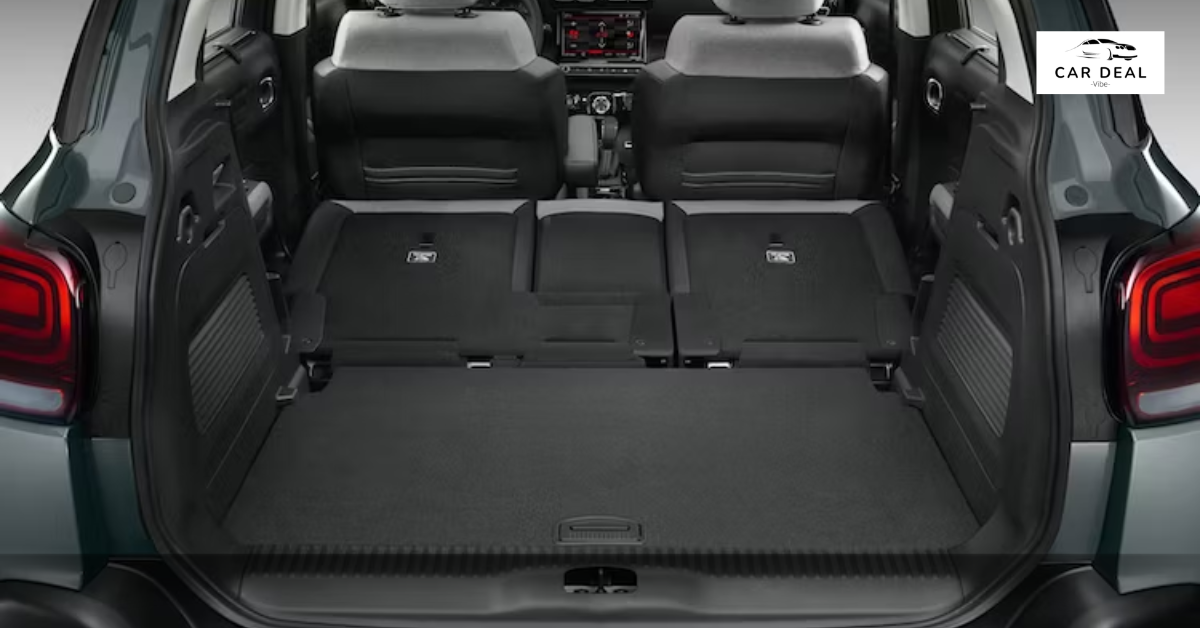
This section is divided into two sections. The 5-seater C3 Aircross has a 444-liter stowage capacity, which will leave you wanting more room. It’s deep as well as huge, so packing enough luggage for a whole weekend or even more won’t be a problem. However, when all the rows are up, the 5+2 seater model only has 44 liters of storage capacity left.
However, if you remove the third-row seats entirely, 511 liters of room become available. Should that prove insufficient, you have the option to descend to the second row, which offers an enormous 839-liter storage capacity. Nice, however you still need to be aware of the exposed seat mount brackets that could obstruct your path.
Still basic
Other than the gearbox console, of course, there are no modifications to the cabin’s appearance. There aren’t many soft touch materials that feel good to the touch, and the dashboard design is primarily derived from the smaller C3 hatchback. Nevertheless, the proper roughness has been added to the harsh plastics so that the experience doesn’t feel cheap. The plastic panel on the door pad, which contains the window controls, is one exception; it feels flimsy and weakened.
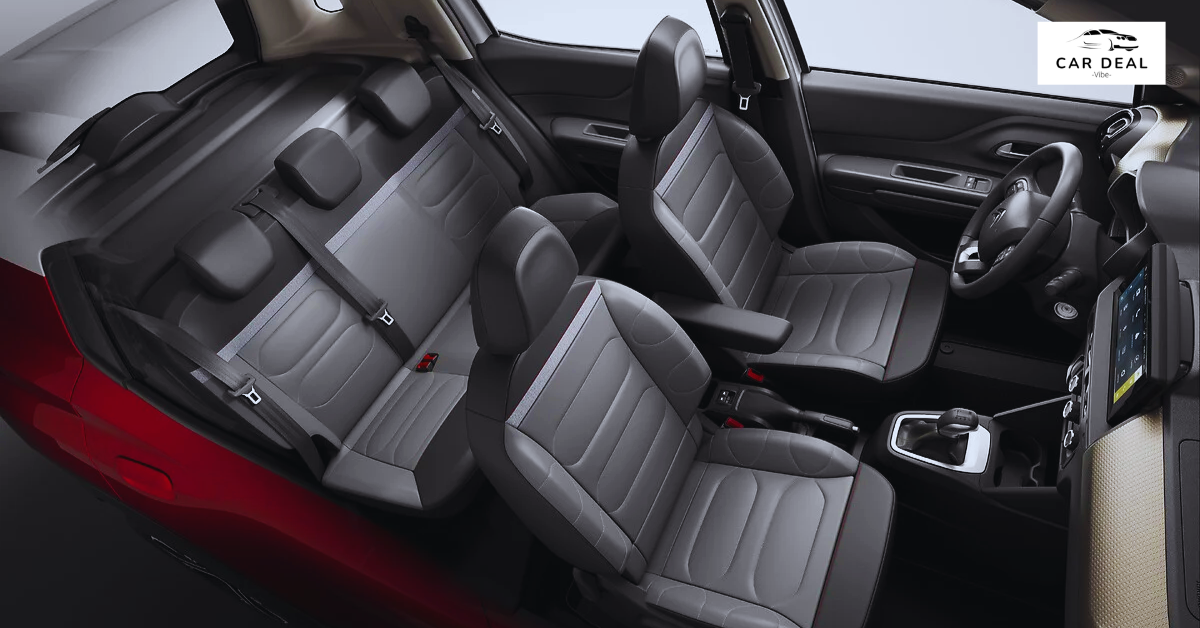
The semi-leatherette seats, the driver armrest, the leather on the door pads, and a leather cover for the steering are the few high-end components. To accommodate the passenger, the latter may have been significantly widened as well.
There is no resemblance between the gear lever and the console in terms of appearance. Given its appearance and markings, you would have a difficult time determining that this is a torque convertor automatic rather than an AMT.
Experience in rows two and three
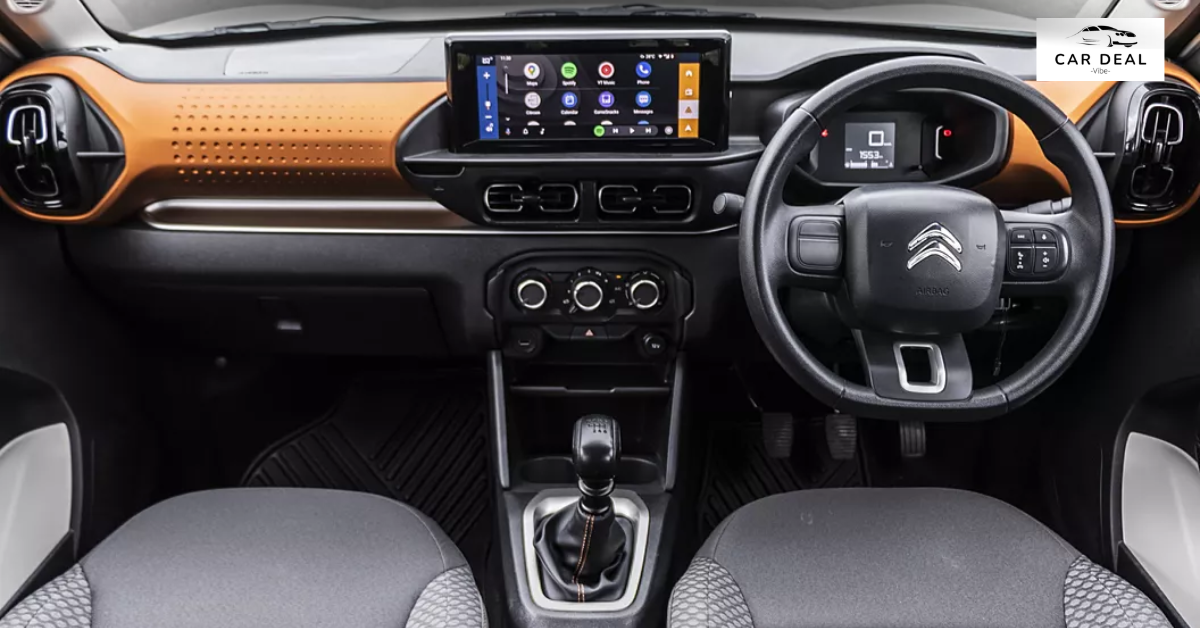
It remains true that the C3 Aircross provides a nice second row experience. Even for taller passengers, there is sufficient leg, knee, and headroom, and three individuals of average size may fit shoulder to shoulder. However, there is no headrest adjustment available for the middle one.
In terms of features, the 5+2 models are the only ones featuring roof-mounted AC vents with blower settings, a few USB chargers, and a convenient bottle holder in the door. For the 5+2 models, there is no middle armrest available – Citroen C3 Aircross.
The left second-row seat now folds and tumbles when the strap is pulled to reach the third row. There is plenty of room for entry and exit, but be aware of the height of the roof. Once inside, you won’t find much to be dissatisfied with.
Although the underthigh support is a little on the small side, you won’t be able to touch the chairs up ahead until you’re at least 6 feet tall. Although there is enough width for two people, the headroom is a little on the small side. The USB chargers and two cup holders check the practicality box. However, the elevated front seats and small rear quarter window limit view all around Citroen C3 Aircross.
It’s not the most comfortable for extended periods of time, but it works well for quick trips into the city.
Practicality
One of the advantages of the C3 Aircross is this. The door pockets are roomy enough to fit one-liter bottles with ease. Beneath the air conditioning vents is a designated phone tray as well as extra room for items like receipts, wallets, and keys. The glove compartment is similarly sizable, and there are two cup holders directly in front of the gear knob.
Two cup holders are located on the center tunnel for second row passengers, and two more are located in the central armrest (for five-seater versions). Third row passengers also receive two separate cup holders, as was previously indicated. A 12-V socket, a USB port, two USB ports for the second row, and two USB ports for the third row are among the charging ports. Some people will regard not having any type-C ports to be a miss.
Features and safety
Not much has changed on this front either. The list still includes features like electrically adjustable ORVMs, manual AC, steering-mounted controls, a 7.25-inch touchscreen with wireless Android Auto and Apple CarPlay, a 6-speaker sound system, and a digital instrument cluster measuring 7 inches.
However, the C3 Aircross now has remote control start/stop, so you may use it to turn on the air conditioning and let the interior cool down before you leave. However, as compared to its competitors, the list is remains tiny despite this recent addition. Features like automatic climate control, sunroof, cruise control, and auto day/night IRVM are getting more and more prevalent and ought to have been available on the C3 Aircross as well.
The C3 Aircross’s safety kit includes dual airbags, ABS with EBD, a tire pressure monitoring system, hill hold aid, and an electronic stability program, even though there is no crash test rating to determine the vehicle’s actual level of safety. While not the most comprehensive kit, it does provide the essentials. It would have been nice to have six airbags, especially at that price.
Engine And Performance

The C3 Aircross’s 1.2-liter turbocharged petrol engine remains, but the torque has been increased to 210Nm thanks to a new torque converter and 6-speed automated transmission.
It functions best when you drive slowly, especially in urban areas. Most of the time, you won’t even notice the rapid and seamless upshifts. However, if you request even a small amount of acceleration, it will quickly downshift, causing a delay before experiencing a sudden acceleration spike. If you are not very deliberate with your throttle control, this can make driving a little jerky. Driving isn’t quite as smooth as it usually is with gearboxes that have torque converters installed. Still, it is foreseeable.and as an owner, with time, you should get used to managing it.
It does become much smoother and a more comfortable driving experience at speeds above 45 kmph. Once more, driveability is highly linear and excellent for traveling on the highway with ease. Thus, much like the car with the manual transmission, this isn’t a car for enthusiasts, but it’s excellent for logging miles.
There is a manual mode available for those who want even more control, however it is shifter driven and lacks paddle shifters. Speaking of the gear selector, it’s a fairly antiquated setup that led us to believe that the car’s original transmission was an AMT rather than a torque converter.
Although we were unable to test the cars, we were able to estimate the efficiency based on stop-start driving, accelerations, and periods of idle time, all of which occur throughout our shoots. The results showed an estimated 10.4 kmpl. Additionally, this value was increasing, indicating that it might be fairly efficient in practical situations.
Ride and Handling
The French automaker has a talent for perfecting the ride quality of its vehicles, as we had seen with the C3 Aircross manual. We are pleased to inform that, in terms of the automated, everything is unchanged and comfy. All potholes, highway gaps, and undulations are easily absorbed by the suspension, and it does it largely silently.
In some cases, there will be some horizontal movement, but this may be managed by reducing the speed and navigating the bumps more slowly. When driving in the city, the steering feels heavy, but when you turn a corner, it becomes lively. The steering has a wonderful weight to it.
There may occasionally be some horizontal movement, but this may be easily remedied by reducing the speed and navigating the bumps more slowly. The steering feels heavy when driving in the city, but it comes to life as you turn a corner. It has a wonderful weight to it.
We were also impressed with the handling on our quick drive to Lavasa, as the vehicle remained composed and stayed flat on turns. Although there was some body roll, it was quite reasonable for a car this size.
Verdict
The largest hole in the SUV’s armor has been patched by Citroen with the release of the C3 Aircross’s automatic gearbox. It enhances the simplicity, adaptability, and comfort of the C3 Aircross package by adding a convenience element. Though it still lacks several nice-to-have features, the C3 Aircross’s utility factor—rather than its creature comforts—was always its main selling point.
It excels at everything from the fundamentals, such as providing a comfortable ride and a capable engine for good all-around drivability. Its convenience is increased by the presence of an automatic, and all of this is provided for less than Rs 16 lakh. To give you an idea, top-spec SUVs in this class (such as the Creta and similar models) with all of its bells and whistles have surpassed the Rs 20 lakh (ex-showroom) threshold.
You won’t be disappointed with the C3 Aircross if you’re on a tight budget and value room, comfort, simplicity, and versatility over a luxurious and feature-rich interior experience.
In 2024, the Mahindra XUV400 EL Pro will be the best electric SUV around Rs 20 lakh.
Two 10.25-inch screens, two zones of climate control, a wireless phone charger, rear AC vents, a dual-tone interior theme, and a redesigned flat-bottom steering wheel are among the new features.
Mahindra opted to give its electric SUV a significant makeover as the new year approached, and the Mahindra XUV400 Pro line (EC Pro and EL Pro) was introduced. Numerous upgrades are included in the new XUV400, such as larger infotainment and driver’s display screens, fresh interior themes, and a host of contemporary features and technologies. The finest aspect? These new pieces are all available at an incredibly low price: 15.49 lakh to 17.49 lakh rupees
An Exceptional Style
The XUV400’s exterior design hasn’t changed all that much, which is fortunate because it already has a distinctive look. Being a C-category SUV, which puts it a whole segment above (and bigger than) its main competitors, gives the electric SUV a suitably tough appearance and large proportions. This gives it plenty of room within the cabin. Its distinguishing modern components, such as the copper inserts, perfectly balance this tough design.
A Whole New Cabin
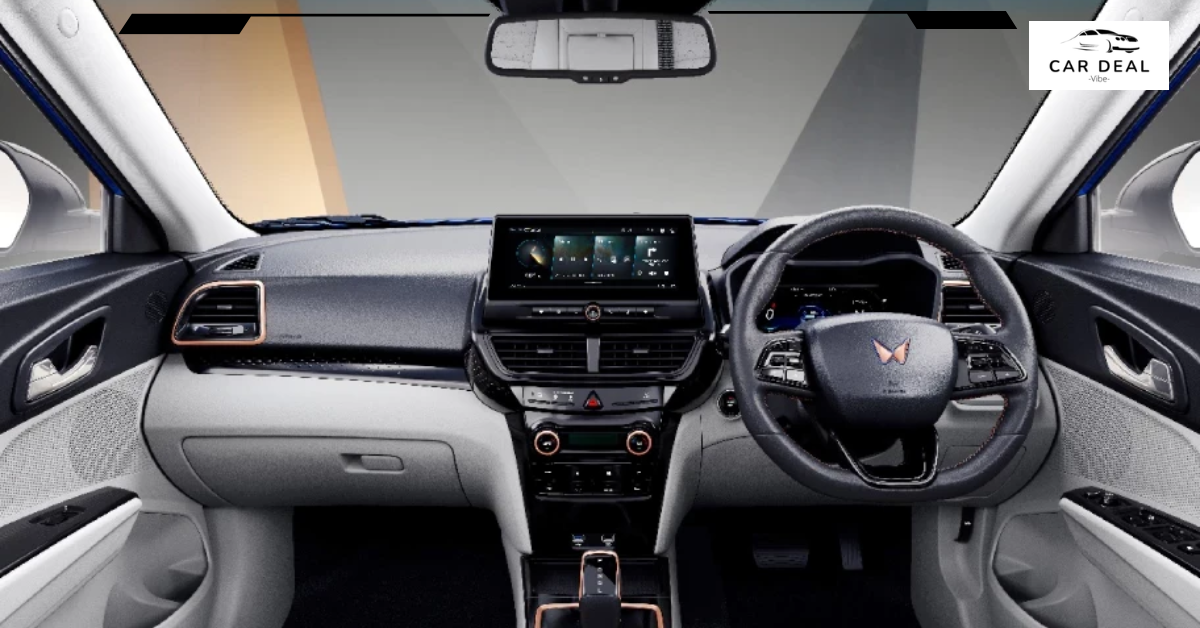
The 2024 XUV400’s completely redesigned cabin is the main modification. The interior of the previous SUV model, which was entirely black, has been replaced with a black and light grey color scheme. The XUV400’s interior now feels more upscale and contemporary thanks to the redesigned cabin motif, particularly the dual-toned dashboard. This theme gives the XUV400 a more upscale appearance while also creating a more airy interior.
In addition to the new motif, Mahindra has paid close attention to the little details on its SUV. Gloss black accent pieces adorn the dashboard, adding a luxurious touch and pleasant to the touch. The door handles are now chrome, which goes wonderfully with the cabin’s style. Copper accents are also added to the interior of the cabin, such as on the center console and around the AC vents. But this isn’t the only significant alteration; the cabin theme
Greater Screen Sizes
The screens on the XUV400 have been improved by Mahindra to further enhance the user experience. The 10.25-inch digital driver’s display, which has been tastefully incorporated into the overall design, is the first feature. Every drive mode has a unique theme, and the graphics are excellent. Additionally, maps have been included in the driver’s display to facilitate navigation; this eliminates the need for you to glance at the entertainment system to view your destination. Additionally, a full-screen navigation view is included to make sure you don’t unintentionally miss a turn.
There is no denying that the new 10.25-inch touchscreen infotainment system is a fantastic addition to the XUV400’s interior. It features the same user interface as the Mahindra XUV700 and its graphics are also quite good. The incredibly responsive touchscreen is also compatible with wireless Android Auto and Apple CarPlay, which will be released through an over-the-air update shortly
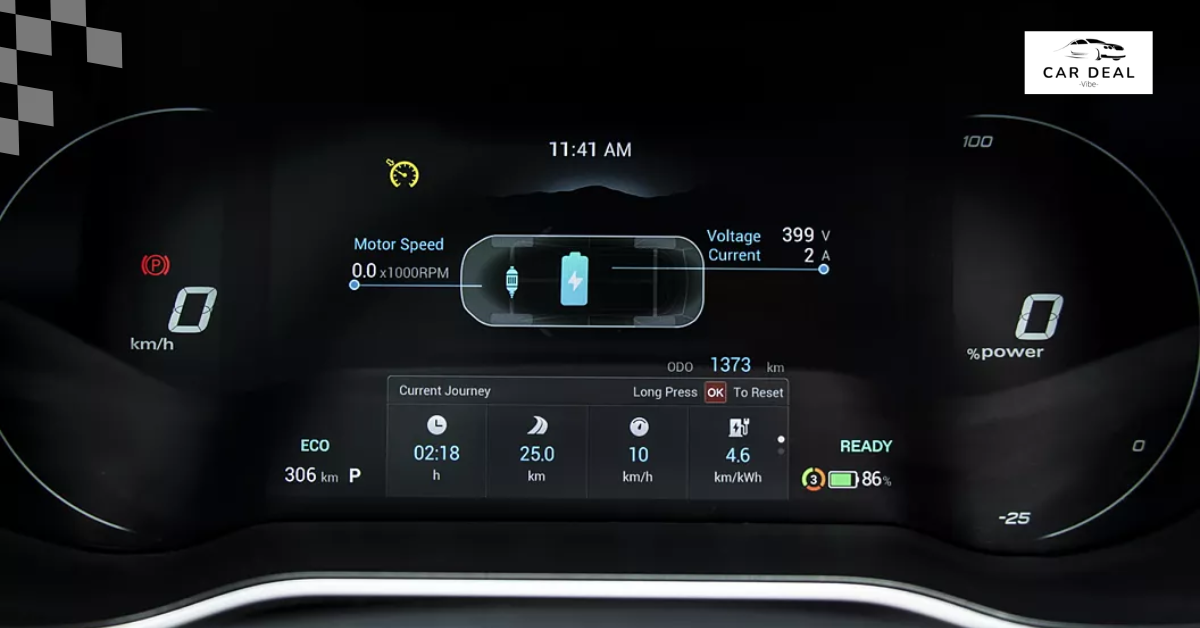
Mahindra’s AdrenoX-linked car functions are also available with this enhanced screen. Roadside assistance, valet mode, vehicle status, remote vehicle functions, e-call, and SOS are just a few of the more than fifty capabilities that are accessible right from your phone. These features allow you to drive worry-free in addition to providing a flawless experience with Mahindra XUV400 EL Pro .
Modern Tech
Mahindra has ensured that your experience will not be compromised. In addition to the new screens, the XUV400 now has numerous new features like wireless phone charging, USB Type-C and a 12V socket for the rear passengers, dual-zone climate control, rear AC vents, and Alexa integration (which will be available soon via an OTA update). With the inclusion of these elements, you can be sure that the XUV400 experience is complete.
So Much Space
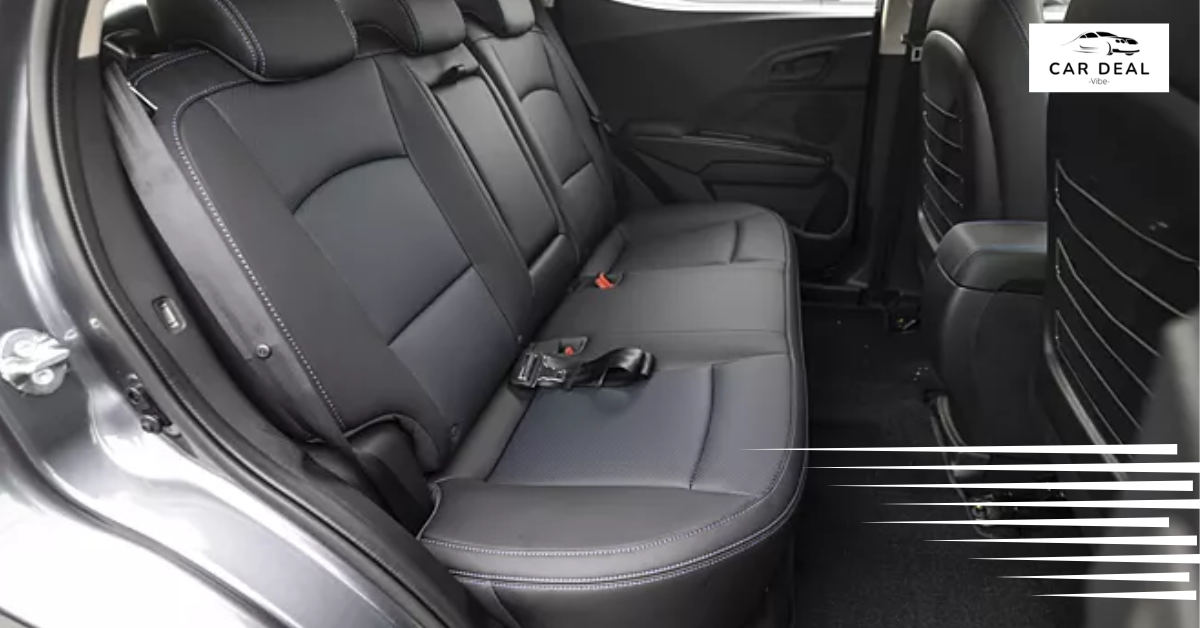
There are several advantages for the owners of the XUV400 since it is the largest SUV in its class. The cabin’s interior comes first. There is enough room for you and the other passengers in addition to the comfortable seats. The back seats can also easily fit and enjoy the room because the floor is not raised.
Secondly, extended journeys are effortless with the 378 liters of boot capacity. There’s enough room on the sides for a small bag, and you can easily fit three or four hard bags here, Mahindra XUV400 EL Pro
Top-Rated Safety
Six airbags, ABS with EBD, an electronic stability program (ESP), a tire pressure monitoring system (TPMS), all-wheel disc brakes, IP67 water and dust resistance, and ISOFIX child seat anchors are among the safety features of the XUV400.
With all of this safety gear, the XUV400 is the safest option for your family.
Energizing Performance
The XUV400’s thrilling performance is still there even though its cabin and feature list have undergone significant changes. With best-in-class acceleration, the XUV400 lets you realize how much fun driving an electric vehicle can be. The XUV400 accelerates to 100 km/h in 8.3 seconds, and overtaking is a breeze. You won’t ever have a power outage while driving, whether you’re in a city or on a highway.
Comfortable Ride Quality
The performance is thrilling, and the ride quality is flawless. Even on damaged roads, the suspension manages to absorb shocks and potholes very well, so you don’t feel much movement within the cabin. You can drive with excitement and relaxation thanks to the performance and ride quality combo.
Stress-free Charging
A lot of individuals think about the charging process when they are thinking about purchasing an electric vehicle. How should it be charged? Is it taking too long to charge? Does it always need to be charged at a fast charging station? Mahindra is aware of this and provides the XUV400 with 50kW DC fast charging capability, which can charge it from 0% to 80% in just 50 minutes, as well as the option to charge it at home. Simply plug the car in, and it will be completely charged in a few hours.
Charging Speeds | |
50 kW DC Fast Charger | 50 minutes (0-80 percent) |
7.2 kW AC Home Charger | 6.5 hours |
3.3 kW AC Home Charger | 13.5 hours |
Furthermore, you receive 300–310 miles of range in real-world circumstances, which is more than enough to last you a week.
What happens, though, if the battery begins to overheat? There is also something Mahindra can offer you. You can extend the battery’s life and prevent overheating and damage using Mahindra’s battery management system, which comes with the XUV400.
Verdict
This is the appearance of a fully assembled package. With its excellent design, luxurious interior, cutting-edge features, connected car technology, best-in-class safety, ample space for the whole family, thrilling driving experience, smooth ride quality, and worry-free charging, the Mahindra XUV400 is an excellent choice. All of this is for an incredibly low cost. In addition to providing everything a family needs, the Mahindra XUV400 Pro’s electric drivetrain encourages a more environmentally friendly way of living.
Hyundai Exter: Long-term Fleet Introduction
It is attractive, compact enough for cities, and rides comfortably, but its performance is lacking.
The demand for SUVs has skyrocketed in the last few years, to the point where every brand is vying for market share by offering as many SUVs as they can, even if some of them aren’t conventional SUVs – Hyundai Exter: Long-term Fleet Introduction
One such vehicle is the Hyundai Exter, the newest model in our long-term inventory. The highest-spec SX (O) Connect dual-tone manual model that we have is priced at Rs 9.42 lakh (ex-showroom). Here are our initial thoughts after a little over 250 km of driving – Hyundai Exter: Long-term Fleet Introduction
A tiny bit rugged and modern
The Exter’s design language incorporates both of these elements, giving it the appearance and feel of an SUV while retaining its contemporary features. Its straight lines, sleek grille, upright front profile, and H-shaped DRLs immediately make an impression on you that it’s a modern vehicle unlike anything you’ve seen before.
The rugged aspect of its design is also visible upon closer inspection. Huge bumpers, wheel arches, door cladding, and a boxy shape all come together. These days, many cars come equipped with these components. However, they are incorporated quite well in this instance, giving the Exter its robust SUV appeal.
It’s amazing how often people turn around to see the Exter properly after driving it for even a short while. It is definitely eye-catching, that much is clear.
The Compact Form Factor
It is based on a hatchback, the Hyundai Grand i10 Nios, which explains why it is that size. Because of its SUV-like styling, it may appear large, but in reality, it’s quite small—3815mm long, or smaller than the Maruti Swift. Being small is actually a benefit in the case of the Exter, so it’s not always a bad thing.
The majority of conventional SUVs struggle to maneuver through traffic, navigate small streets, and locate sufficiently large parking spaces. However, these issues don’t really bother the Exter. It has maneuvered through congested areas with ease, gotten around traffic in the last few days, and parked in constrained spaces without any difficulty.
Comfortable? Yes
You can maintain your driving comfort while using the Exter. There is plenty of headroom up front, and the seat cushioning is well-balanced and supportive. The same level of padding and decent headroom and knee room are found in the back as well.
The same degree of comfort is maintained when driving. You hardly notice potholes and speed breakers inside the cabin because of how well the suspension absorbs them. There is very little side-to-side movement and the body stays stable at high speeds. However, keep in mind that it’s not a large, conventional SUV, and slow down when you approach larger humps and potholes; otherwise, you’ll get a pretty strong sense of jerkiness.
More Power Please
The Exter is deficient in one area: performance. It’s not as if it has nothing accomplishment-wise. You can drive with ease thanks to the refined 1.2-liter petrol engine. It’s not as fast or responsive, though. It takes a while to pick up speed, but it reacts to your input.
You will notice that it takes longer to pick up speed whether you are traveling on a high-speed highway or a low-speed city commute. There have been occasions when we’ve had to shift down a gear to get the necessary force and speed when overtaking. Hyundai ought to have included a more potent engine, even though it is based on the Grand i10 Nios, to provide a more noticeable SUV driving experience.
Therefore, the Hyundai Exter has made a positive impression after 250 km. It boasts an eye-catching design, an easy-to-maneuver compact size, a comfortable ride quality, and a promising feature list that we’ll go over in more detail when we give it a test drive. You’ll yearn for more, though, because of the lack of power. We’ll be reviewing the Exter in greater detail when it arrives, but it will be here for six months.
Hyundai Verna Turbo Manual: Long-term Fleet Introduction
The latest generation of the Verna is larger, faster, and more feature-rich than ever before. But what is it like to live with every day?
Moving to a new city presents numerous challenges and changes, but perhaps the most significant for me was losing access to a personal car. As a self-proclaimed enthusiast, I knew it would be difficult to find a suitable replacement for my Volkswagen Polo GT back in Delhi. But when I was assigned the new Hyundai Verna WITH the 1.5-litre turbo-petrol engine as my long-term review daily-driver, I admit I was a little excited.
The Hyundai Verna has always held a special place in my heart due to my long history with Korean compact sedans. My first family-loaned car, a few years after getting my driver’s license, was a Hyundai Accent. I always preferred the look and feel of a sedan over any other type of car, especially how low the driving position was (almost like a race car). More than a decade later, I find myself with the digital key fob (rather than the actual key of the Accent) for the most powerful version of the sedan to date.
Initial impressions
On a Sunday afternoon a week before Christmas, I picked up the new Hyundai Verna, and the first task was to thoroughly clean it. That’s why I took it to the professionals, who washed it and cleaned the interior. I finally got to know the new-generation sedan from the inside out. This top-spec SX(O) Turbo gets full LED lighting front and rear, which looks especially stunning at night. The blacked-out 16-inch alloy wheels with red brake callipers add to the car’s sporty appearance.
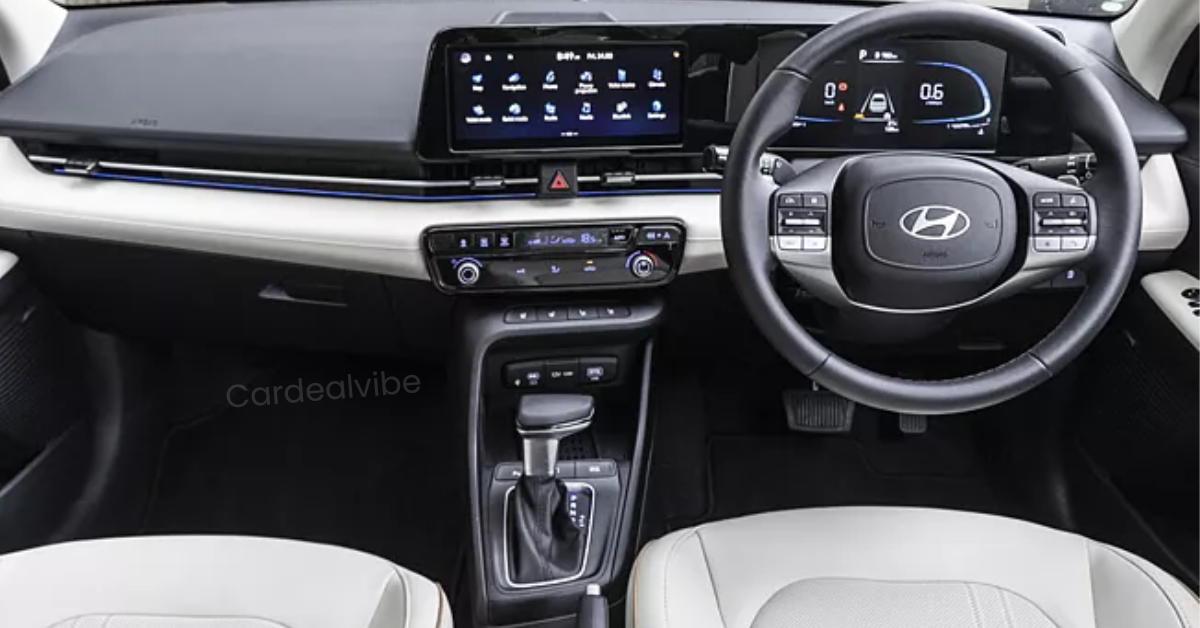
The Hyundai compact sedan has become a lot more premium inside its all-black cabin with leatherette upholstery since the days of the Accent. Its integrated displays, cabin lighting, and plethora of comforts all contribute to a modern interior, which includes a 4-way power-adjustable driver’s seat with manual height adjustment.
Oh, and in case I forgot, the Verna in question came with a 6-speed manual transmission! After years of driving a Volkswagen DSG (dual-clutch automatic), the powertrain takes some getting used to, but the turbo-petrol engine produces 160 PS and 253 Nm.
The Perfect Christmas Gift
The Hyundai Verna long-termer arrived just in time for the Christmas weekend, which seemed quite fortunate. Perhaps the best chance to put some serious miles on the car before 2024. Unfortunately, it appears that the combined car-owning population of Pune and Mumbai planned to travel over the long weekend, resulting in massive traffic jams. Instead, on Christmas Day, I drove the Verna to a nearby tourist attraction in the ghats, along a twisty road with smooth tarmac. This was the first opportunity to see what the new Hyundai Verna could do in terms of power delivery, ride quality, and handling.
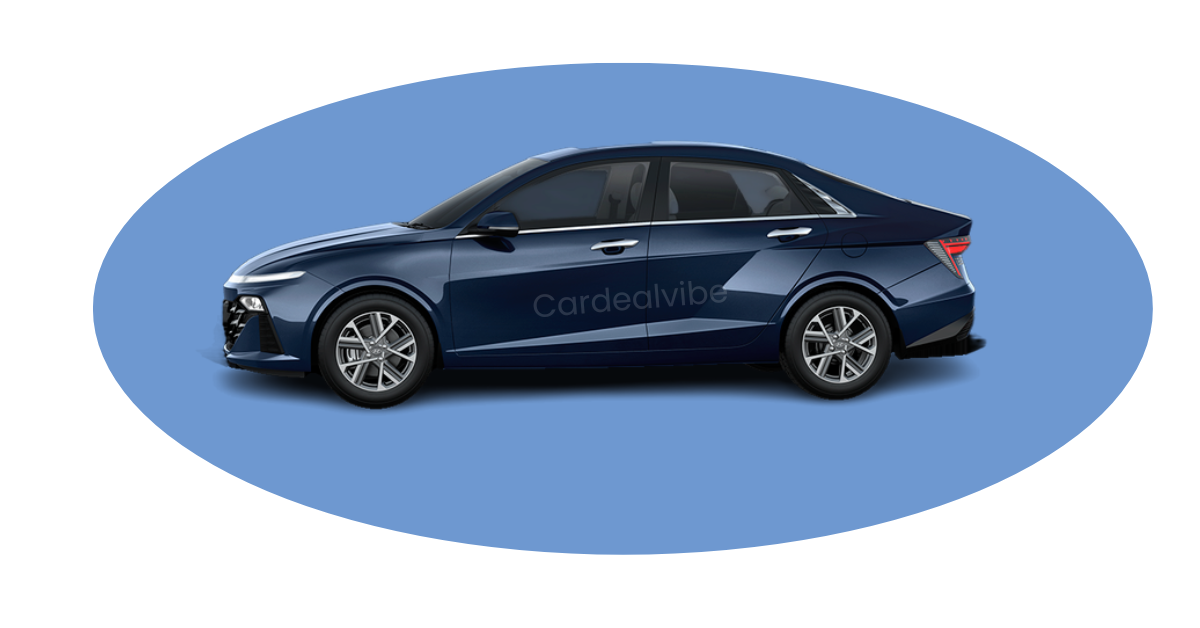
The turbo-petrol engine is responsive in the mid-range, and the suspension setup provides more confidence at speed than you’d expect from a Hyundai sedan. It also has drive modes, but the main difference is that the “Sport” mode weights the steering wheel for greater control through corners.
What’s lined up for the Verna?
Since I relocated for work, I made certain that I was not too far from the office, so that the daily commute would not add significantly to my mileage. Even with trips to the gym and the grocery store, I won’t be able to cover 100 kilometers per week. Instead, I’m planning a slew of weekend road trips to explore my new surroundings and reconnect with old friends in nearby cities.
It’s also worth noting that driving the manual variant with a heavy right foot will be an expensive affair, with the Verna SX(O) Turbo returning an average of just over 9 kmpl in moderate city traffic. However, on the open road where you don’t have to change gears as frequently, it improved to 11-13 kmpl.
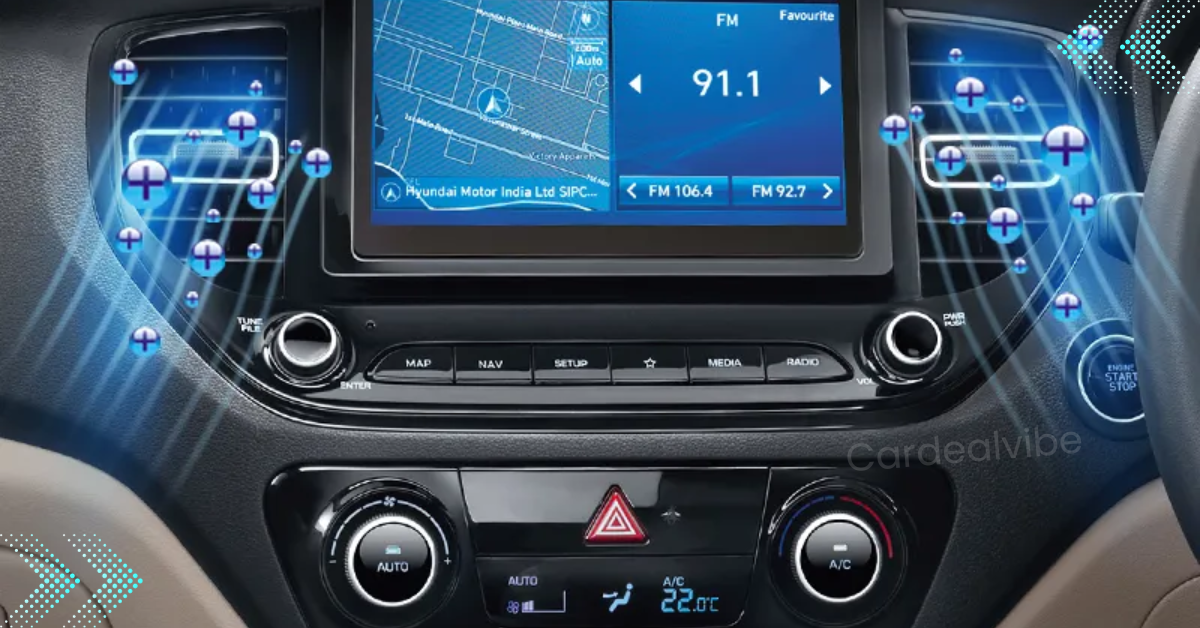
Furthermore, regaining the freedom of personal mobility allows me to pursue new interests and broaden my horizons.
Mercedes-Benz EQE 500: First Drive Review
Mercedes-Benz EQE 500 combines instant performance, technology, and luxury into one useful package.
The public has very high expectations for Mercedes-Benz EQE 500. For the majority of people, it is the best luxury brand because of its audacious strategy. But they’re exercising caution with their electric vehicles. For what reason is that the case?
The ex-showroom price of the luxurious electric SUV, the EQE, is Rs 1.4 crore. The BMW iX and Audi Q8 e-tron are two additional electric SUVs to take into account at that price range of Mercedes-Benz EQE 500.
Subtle, Not Shouty
The majority of manufacturers have opted to publicly announce their transition to electric power. Not Benz. Their EVs appear to have been billed out of a single block, including the EQE. Surfaces are generally subtle in style, smooth, and easy on the eyes.
In most situations, it’s difficult to consider the EQE500 an SUV. It appears deceptively small in photos. The size looks appropriate for the price in person. It doesn’t appear to have the same presence, though, as the GLE or GLS, two reasonably priced models from Mercedes’ own lineup.
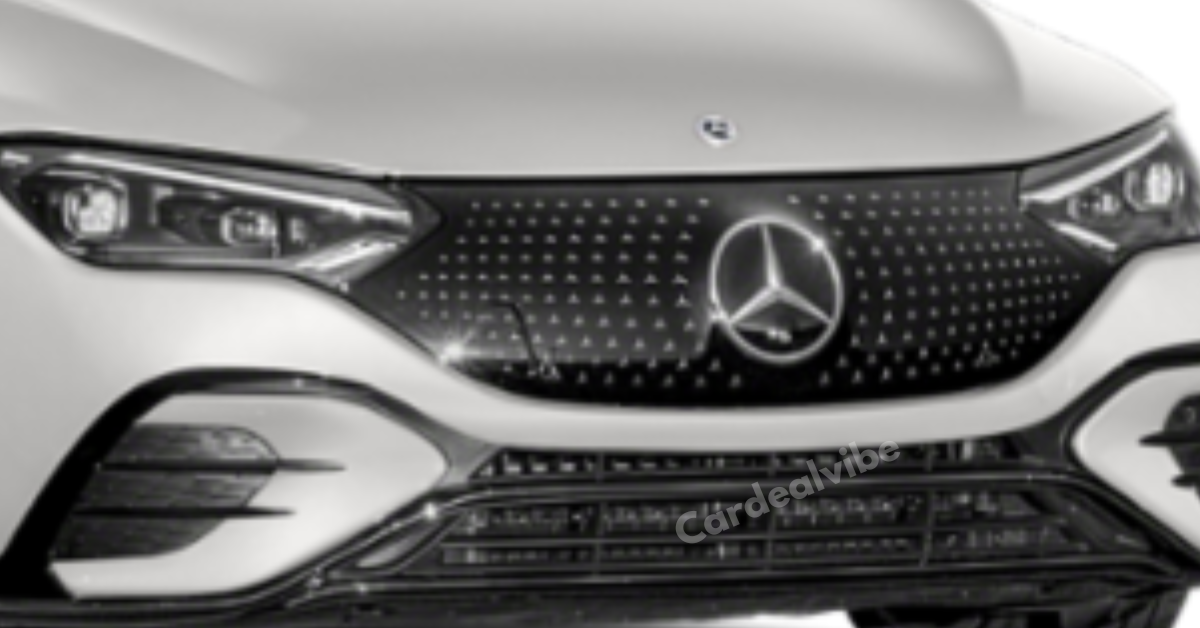
That being said, there’s plenty to gaze at. Over 270 small, three-pointed stars are arranged on the grille; they resemble the prints on Louis Vuitton and Gucci handbags. A sense of occasion, but unnecessary nonetheless. With a thin light bar connecting the two, the headlamps themselves feature 1.3 million LED light pixels each.
The side profile’s highlights include the massive 20-inch alloy wheels, the motorized door handles that fit flush, and the subtly placed “EQE” branding next to the A-pillar. The rather unusual location for the washer-wiper fluid filling is also visible from the co-driver’s side. The rear features fake vents in the bumpers and a large connected tail lamp with intriguing graphics, as is typical of Mercedes EQ models.

The EQE doesn’t make a big impression on the roads, despite its obvious expensive appearance. Those who don’t think it’s appropriate to show off their wealth will probably find this design appealing.
Being Familiar Is Good!
Before you got your hands on the EQE, chances are you’ve driven a Mercedes. This implies that you’ll recognize a lot of things and feel right at home almost right away.
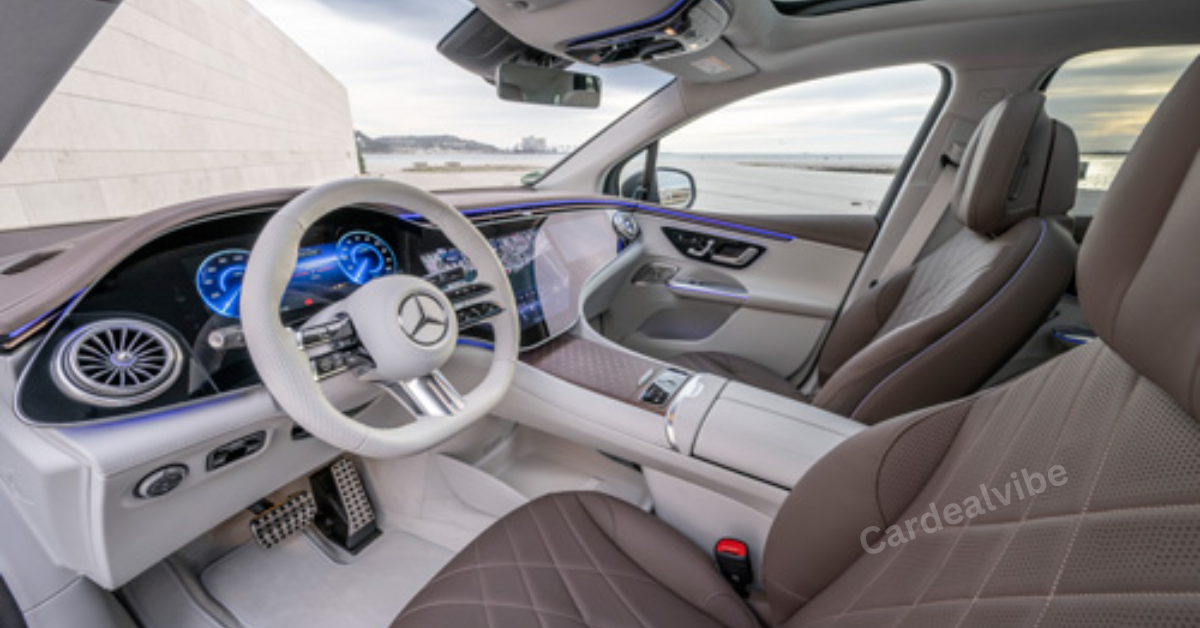
Just slightly modified to fit the EQE’s dimensions, the design is an exact duplicate of the flagship EQS. As classic as it gets, with its wraparound dashboard, the elaborate circular air conditioning vents, and the way leather, wood, screen, and light interact.
As anticipated, the quality is also, for the most part, excellent. All that you come into contact with feels sturdy and luxurious. The open-pore wood on the central tunnel, which is adorned with Mercedes logos for added effect, feels incredibly rich, and the clicks from the AC vents are incredibly satisfying. There are a few exceptions, like the USB charging enclosures at the front and back, and the plastic panel behind the seat controls.
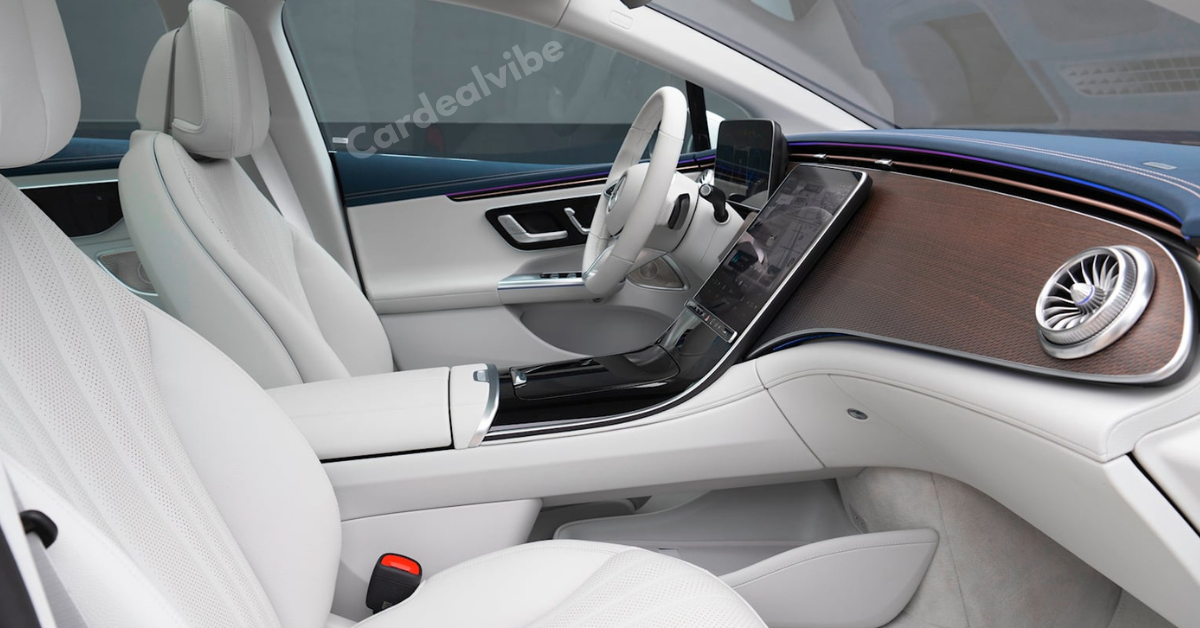
The EQE feels about average in terms of practicality. There is more than enough room for four six-footers. The seat squab is shorter than rear seat occupants would have preferred, depriving them of essential underthigh support. Mercedes has made an attempt to address this by slightly lowering the hip point, but it doesn’t completely resolve the problem. Furthermore, it is obviously less rear-seat-focused than other Mercedes cars in this price range. There are no sunblinds, no rear entertainment options, no armrest controls, and no other amenities for the occupants save the two climate control zones and chargers.
The EQE is a perfect fit for a family vehicle. With 520 liters of space, the spare wheel takes up some of the boot’s capacity. Thus, even though the EQE’s range allows you to take lengthy weekend trips, the boot space may be a problem.
Features
The EQE SUV comes equipped with every feature you could want at this price range. This comprises:
| Memory-functioning power front seats | Comfortable and Warm Front Seats |
| Massaged Front Seats | 64 Colour Ambient Lighting With Multi-Colour Modes |
| Climate Control in Four Zones | Motorised Steering Adjustment |
| Powered Tailgate | PM 2.5 Filter |
| Heads-Up Display | Panoramic Sunroof |
| Wireless Phone Charger | USB Type-C Chargers Only (No Type-A or 12V) |
You’ll have a truly opulent experience thanks to the combination of all these features.
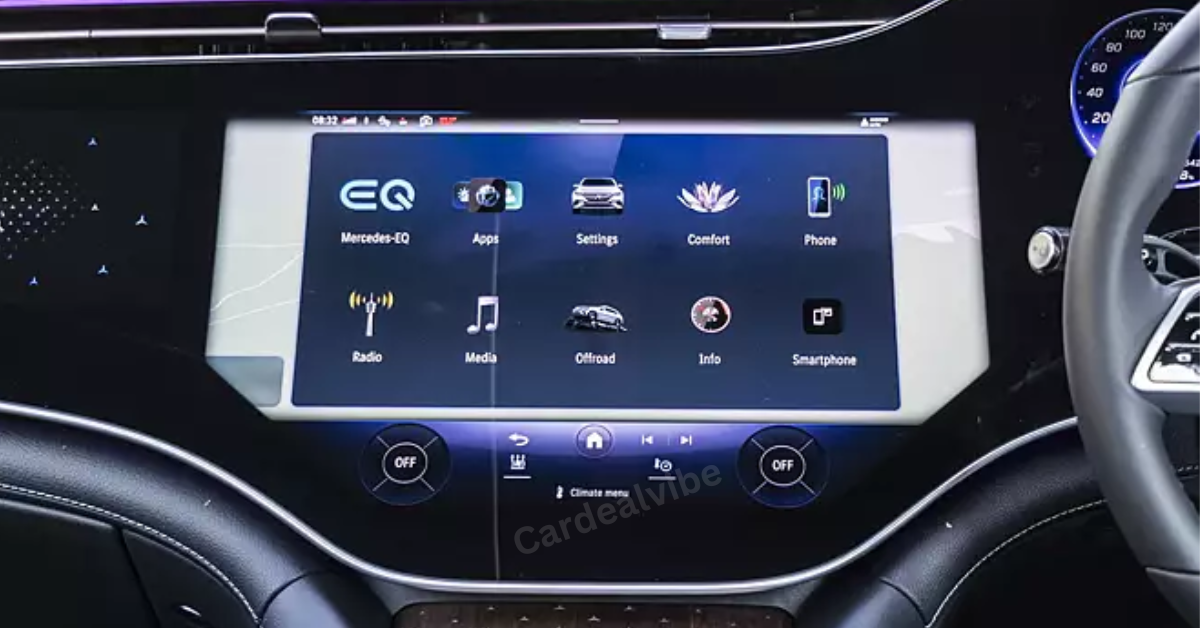
But the standout feature has to be Mercedes-Benz’s recognizable “Hyperscreen.” Three screens are combined here: one for the instrument cluster, one for the front passenger, and one for the center screen.
As one might anticipate, all three have excellent display quality, and the UI is simple to use.
The entertaining addition of the front passenger screen is limited in its use. For instance, the passenger is free to change the settings or turn on the music without upsetting the driver. It’s easier to use your phone or iPad instead of Bluetooth earphones, though you can still connect them to the screen.
Performance

The large 90.5kWh battery of the Mercedes-Benz EQE is nearly twice as large as the battery found in less expensive EVs. Although 550 km is the stated range, you should really expect about 400 km in real driving.
An 170kW DC fast charger can charge the EQE500 from 10% to 80% capacity in about half an hour. It takes roughly five to six hours to charge a device from 10 to 100 percent if you use the 22kW AC home wallbox charger.
Its 408 PS and 858 Nm of instantaneous torque come from a very potent engine. You won’t, however, constantly feel the need to drive it quickly or with enthusiasm. A robust and smooth power delivery is the goal.
Driving is easy within the city. The accelerator’s response is incredibly easy to get used to. The paddle shifters allow you to choose the degree of regenerative braking; however, this vehicle does not have a one-pedal driving mode.It is very comfortable to cruise at speeds that are illegal in our country while driving on the highway.
Merecedes:Benz is aware that electric vehicles (EVs) lack the thrill of operating a car that runs on gasoline. Thus, they have made an effort to liven up the driving experience by including a variety of sound modes that can be chosen via the touchscreen. There’s “Roaring Pulse” (sounds like a sportscar), “Vivid Flux” (sounds like futuristic techno), and “Silver Waves” (sounds like a V6 petrol engine).
Ride and Handling
The experience is extremely comfortable, just as one might anticipate from a Mercedes-Benz. The EQE500 has big 20-inch alloy wheels, but the tires’ plenty of cushioning helps lessen the impact. When driving on extremely poor surfaces, you will notice a noticeable side-to-side movement of the vehicle.
The ground clearance is not precisely known. But the EQE ought to perform admirably under most Indian circumstances. Its air suspension allows you to increase the ride height by 20 mm. You should feel even more at ease as a result. But since we have problems with ground clearance with Mercedes’ EQC electric SUV, we want to test this on well-traveled road
Verdict
The Mercedes-Benz EQE500 4MATIC SUV costs Rs 1.39 crore (ex-showroom) and is a fully imported model. The EQE’s opulent cabin, cutting-edge technology, and electric price are the primary factors to take into account. However, SUVs like the GLE or GLS will make more sense if you need more room and a larger car for your family.

